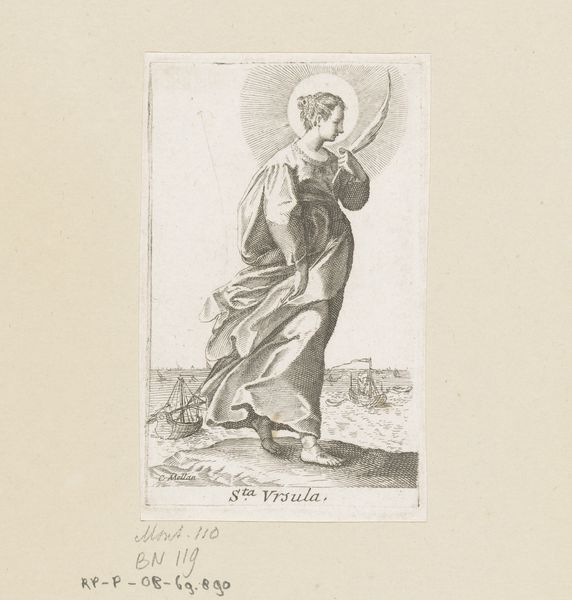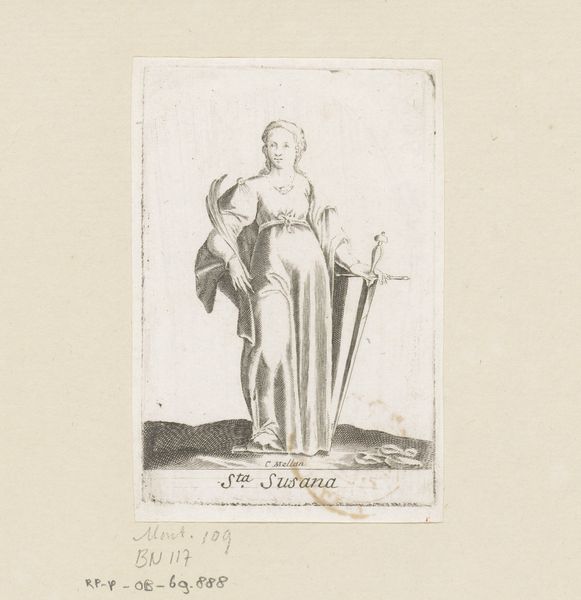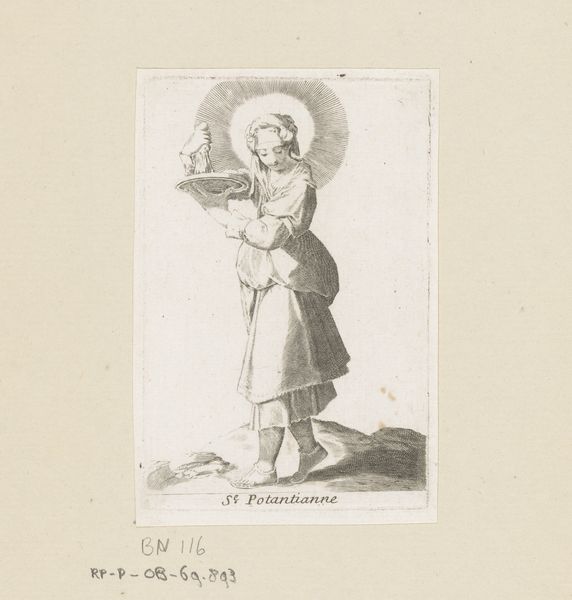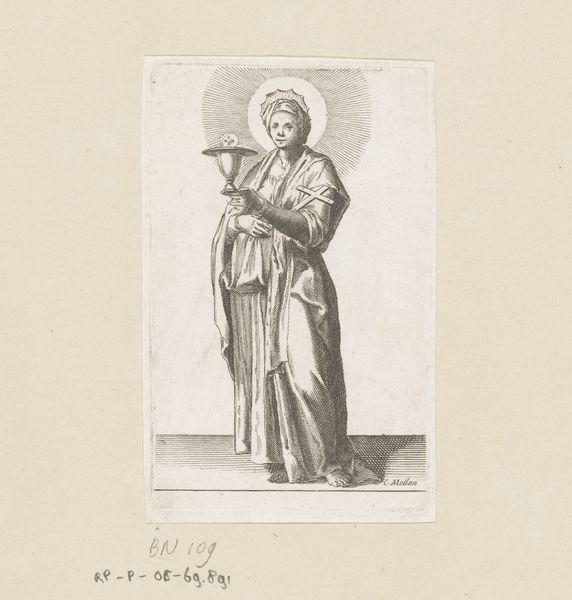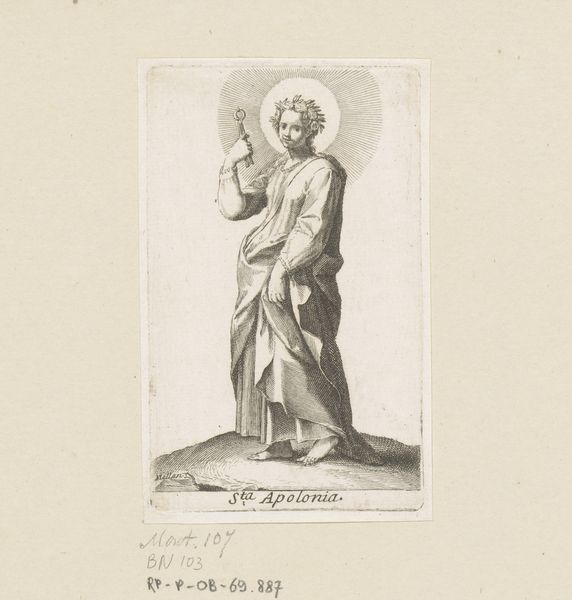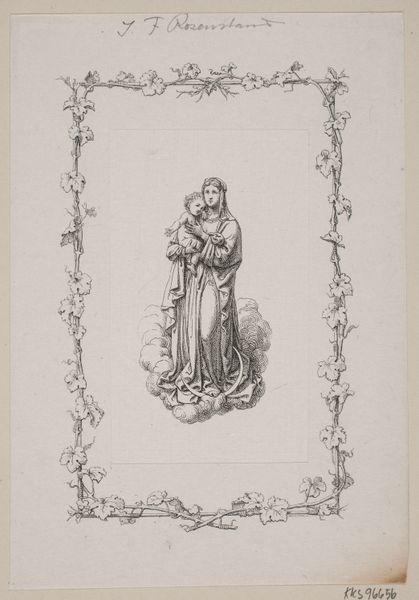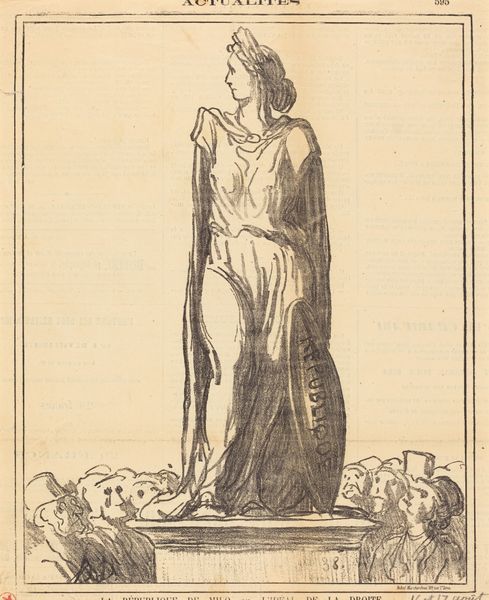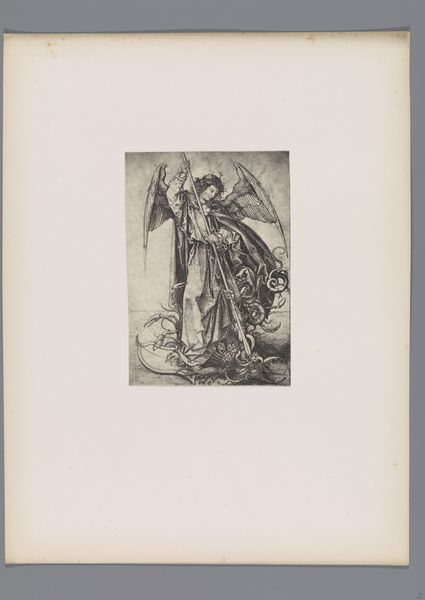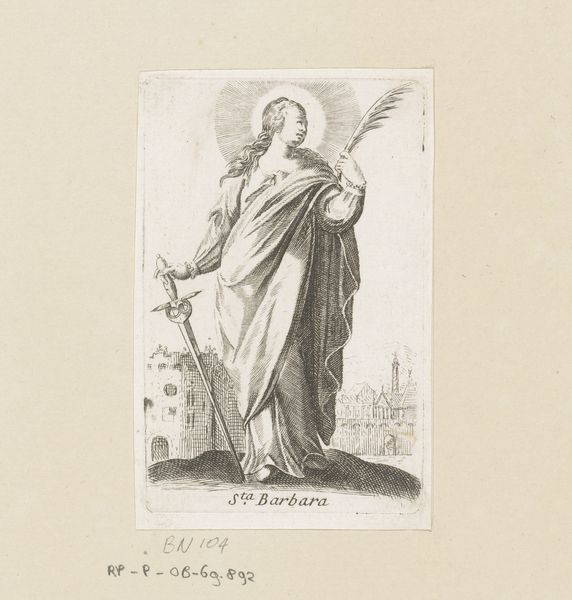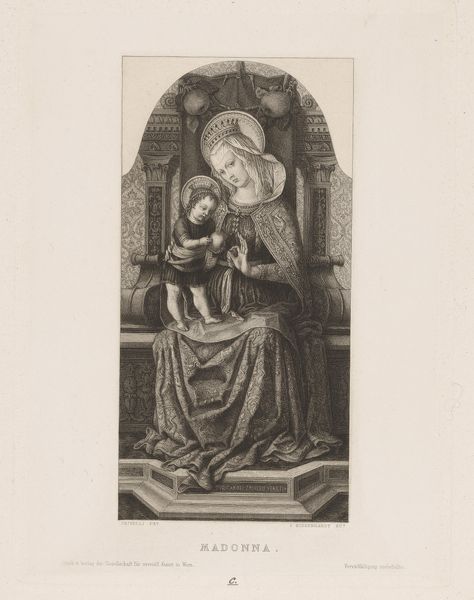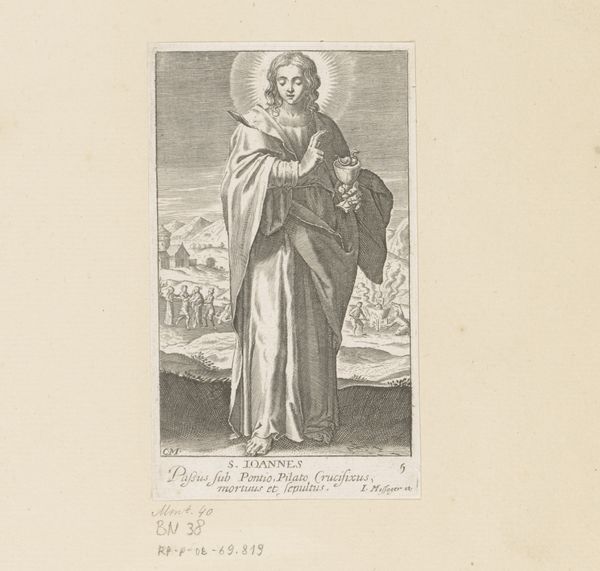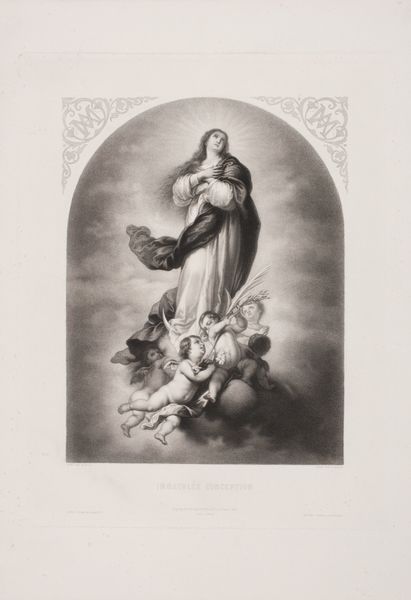
print, engraving
#
baroque
# print
#
figuration
#
line
#
engraving
Dimensions: height 94 mm, width 60 mm
Copyright: Rijks Museum: Open Domain
Curator: Let's consider this print, "H. Margaretha," created sometime between 1608 and 1688. It's an engraving by Claude Mellan, housed here at the Rijksmuseum. What's your initial take? Editor: It strikes me as an assertion of dominance, even a defiance. She's literally towering over these representations of evil—the dragon subdued, the serpent slithering away. Curator: Precisely. Margaret of Antioch, also known as Saint Margaret, holds aloft a cross, a powerful symbol. Look how the lines radiate from behind her head, an almost sun-like halo, signifying her saintly status and divine favor. She’s idealized but maintains this stern look, so full of assurance, almost challenging the viewer. Editor: It’s also interesting how Claude Mellan presents a young, perhaps even pregnant, maiden. What do you make of that apparent duality between purity and supposed sin? Curator: In art of this period, youthful virtue triumphing over beastly desires creates a potent symbol of the Church's strength. She’s a vessel of potential, untainted. It carries such powerful connotations, even if viewed through modern sensibilities. The vanquished dragon, with the serpent recoiling, acts as representations of societal corruption being restrained. Editor: Agreed. Viewing it through a modern lens, one might see how easily symbols are employed to further various institutional narratives. Notice that heavy chain draped from Margaret's dress. In fact, the saint wears what looks like chains on her body. While it might be said to suggest constraint on her evils, who put her in those chains? Is that dress a uniform, or merely her societal costume? Curator: It invites that type of reading. The symbols aren't fixed; they shift across time. What resonates now, versus what would have resonated then, generates an enriching dialogue, wouldn't you say? Editor: Absolutely. Understanding how visual imagery is coded reveals so much about shifting power structures and societal concerns across different eras. Mellan's "H. Margaretha," far from a simple depiction of piety, it is a very complex dialogue on purity, domination, and imposed morality. Curator: In short, she wields this cross with an air of moral righteousness, a visual embodiment of strength, which gives us much to contemplate and unpack!
Comments
No comments
Be the first to comment and join the conversation on the ultimate creative platform.
